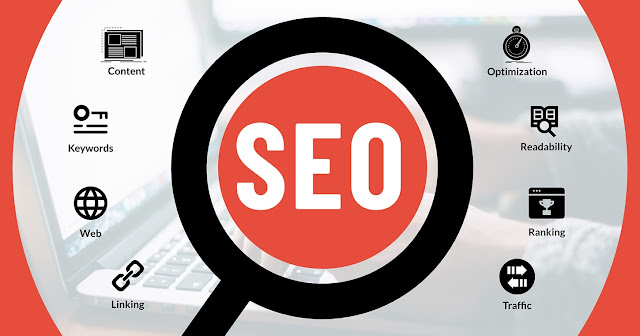CONTENT OPTIMIZATION IN SEO: Content optimization in SEO refers to the process of making changes to the content on a website to improve its ranking in search engine results pages (SERPs). This includes optimizing the content's relevance, quality, structure, and readability, as well as targeting specific keywords and phrases.
The goal of content optimization is to make a website more attractive to both users and search engines, which can lead to higher search engine rankings, more traffic, and improved engagement.
Use of content optimization
CONTENT OPTIMIZATION IN SEO: The use of content optimization in SEO has several benefits, including:
- Improving search engine rankings: By optimizing the content for specific keywords and phrases, a website can rank higher in search engine results pages and increase visibility to potential visitors.
- Attracting more traffic: High-quality and relevant content can attract more organic traffic to a website, which can lead to increased engagement and potential conversions.
- Enhancing user experience: Optimizing content for readability and structure can improve the user experience and make it easier for visitors to find what they're looking for on a website.
- Building brand authority: Providing valuable and informative content can help establish a website as an authority in its niche and build trust with its audience.
- Staying ahead of the competition: With constantly changing algorithms and search engine ranking factors, optimizing content is an ongoing process that helps websites stay ahead of the competition and maintain their search engine rankings over time.
How to improve content optimization
CONTENT OPTIMIZATION IN SEO: Here are some ways to improve content optimization in SEO:
- Conduct keyword research: Determine which keywords and phrases are relevant to your niche and target audience, and include them in your content in a natural and meaningful way.
- Focus on quality and relevance: Create high-quality and relevant content that provides value to your audience and addresses their needs and questions.
- Use header tags and internal links: Organize your content into clear sections and use header tags (H1, H2, H3, etc.) to structure it. Use internal links to help visitors navigate your website and find related content.
- Optimize images and videos: Use descriptive file names, alt tags, and captions for images and videos to improve accessibility and help search engines understand the context of your content.
- Make content easy to read: Use simple language, short paragraphs, and bullet points to make your content easy to read and scan.
- Promote and share your content: Share your content on social media and other platforms, and encourage your audience to share it as well.
- Regularly update your content: Keep your content up-to-date and relevant by regularly updating it and adding new information. This can also help keep your website fresh in the eyes of search engines.
Advantages of content optimization
CONTENT OPTIMIZATION IN SEO: The advantages of content optimization in SEO include:
- Improved search engine rankings: By optimizing the content for specific keywords and phrases, a website can rank higher in search engine results pages and increase visibility to potential visitors.
- Increased traffic: High-quality and relevant content can attract more organic traffic to a website, which can lead to increased engagement and potential conversions.
- Enhanced user experience: Optimizing content for readability and structure can improve the user experience and make it easier for visitors to find what they're looking for on a website.
- Built brand authority: Providing valuable and informative content can help establish a website as an authority in its niche and build trust with its audience.
- Competitive advantage: With constantly changing algorithms and search engine ranking factors, optimizing content is an ongoing process that helps websites stay ahead of the competition and maintain their search engine rankings over time.
- Improved conversion rates: By providing relevant and high-quality content, a website can improve its conversion rates by addressing the needs and questions of its audience and earning their trust.
- Better engagement: Optimized content can encourage visitors to spend more time on a website and engage with its content, which can lead to increased user satisfaction and improved brand perception.
Limitations of content optimization
CONTENT OPTIMIZATION IN SEO: The limitations of content optimization in SEO include:
- Time and resource constraints: Content optimization can be a time-consuming process that requires resources such as specialized knowledge and tools.
- Difficulty in measuring success: It can be challenging to quantify the impact of content optimization efforts and determine their effectiveness in improving search engine rankings and driving traffic.
- Constantly changing algorithms: Search engine algorithms are constantly changing, and what works today may not work tomorrow. This can make it difficult for websites to keep up with best practices for content optimization.
- High competition: The competition for top rankings in search engine results pages can be intense, and websites may face challenges in achieving and maintaining high rankings.
- Over-optimization: Over-optimizing content by using excessive keywords or other tactics can result in penalization by search engines, which can hurt a website's search engine rankings and visibility.
- Balancing optimization with user experience: The goal of content optimization is to improve both search engine rankings and the user experience, but finding the right balance can be challenging. The focus on optimization should not compromise the quality and relevance of the content for the user.










0 Comments